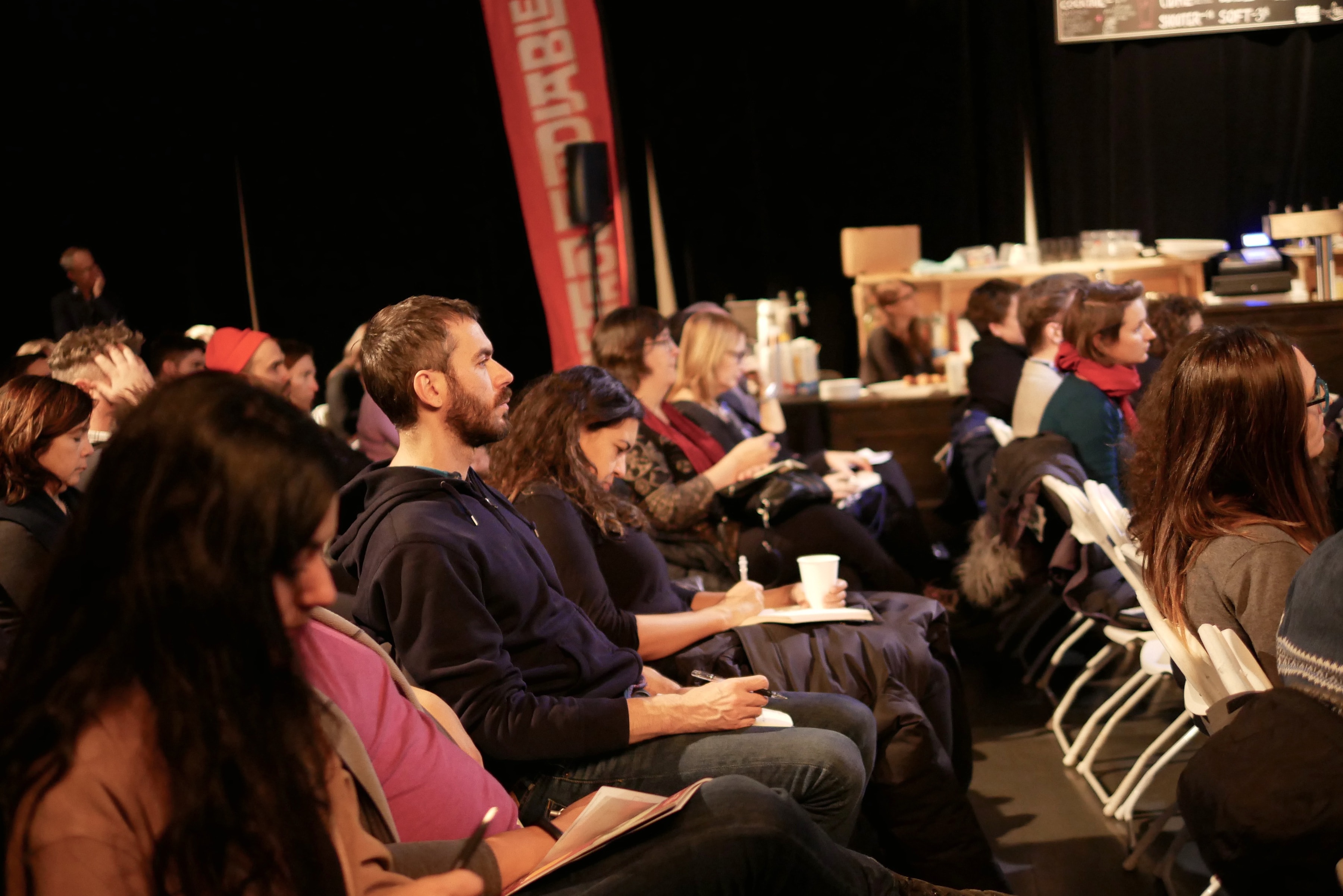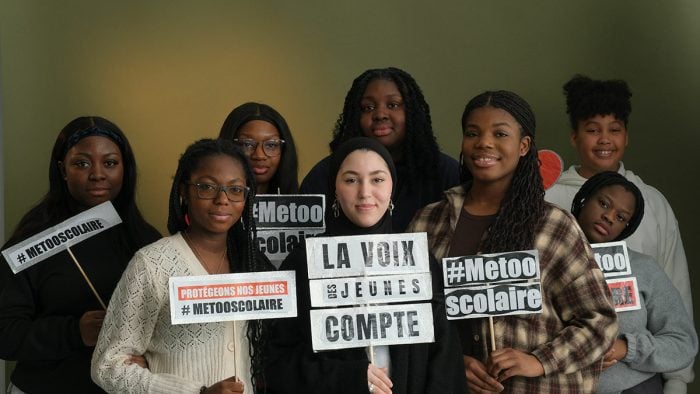Image Rights in Documentaries: Between Respect of the Subject and Public Interest
Does the issue of image rights raise particular issues in the world of documentaries? How has the context evolved since the era of direct cinema and what are the elements to keep in mind from a legal standpoint when producing a documentary? Here's a broad overview of things to take into consideration when it comes to using images before you shoot your next film.
It is during the most recent edition of the Doc Circuit Montréal, part of the Montréal International Documentary Festival (RIDM) that is aimed at professionals, that we attended the workshop titled “The Law of Images” that was facilitated by Remy Khouzam, an attorney specializing in audiovisual and digital production, as well as Mélissa Beaudet, the director to whom we owe namely Police Académie and 180 JOURS.
In a context where new technologies are making images increasingly accessible and where content abounds on social media, it goes without saying that balancing private life, freedom of expression and public interest is a delicate act and that it is increasingly difficult to juggle all of these considerations while remaining relevant. For documentary film-makers, producers or even photographers, there are important considerations to review with respect to image rights.
Image rights in the audiovisual industry: a few definitions
What exactly is meant by image rights? In Quebec, pursuant to civil law, individuals have the right to make decisions regarding the use—and therefore the distribution and/or reproduction—of any image that depicts them. “In fact, we often address the law from a negative angle, i.e., from the angle of what will constitute a violation of the law,” explains Remy Khouzam. “The fact of capturing or using someone’s image, name, resemblance or voice for any purpose other than that of legitimately informing the public would constitute a violation of a person’s right to his or her image and private interest,” he goes on to say.
Furthermore, with respect to the legitimate information to which the public has a right, one must take into consideration a whole set of facts and circumstances which in fact depend on the nature of the information conveyed and the people involved. The attorney gives the following example: “Let’s say that we’re dealing with a politician. A politician is a public figure and, accordingly, each and every one of his actions is a matter of public interest. By the same reasoning, anyone who would be the object of a high-profile trial would no longer be in the private sphere.” That being said, when we are dealing with ‘private’ individuals, it becomes essential to obtain their consent before disseminating images that depict them.
In Quebec, the most famous and controversial case involving image rights is without a doubt the one opposing Pascale Claude Aubry and Éditions Vice Versa. The case made it all the way to the Supreme Court of Canada. After having taken a photo of the young woman sitting on stairs on St Catherine Street and published it—without the young woman’s authorization—in a magazine of which 722 copies were produced, photographer Gilbert Duclos found himself in the midst of a complex case opposing two fundamental principles, i.e., the right to privacy and freedom of expression. Aubry, who claimed that she had been made a mockery of by the publication of her photo, decided to sue the photographer and the magazine for $10,000.

Khouzam explains: “The Court concludes that, indeed, it is wrong to capture someone’s image and disseminate it without that person’s consent, but decides to award only $2,000 in damages rather than the $10,000 sought. However, what should be remembered here is that freedom of expression needs to be clearly defined in consideration of the respect of others. Even though authors have a legitimate right to promote their works and a legitimate interest for the public—in the sense of showcasing an aspect of urban life—, the right to privacy must never be underestimated.”
How and when to obtain consent?
“One must first understand that there is a difference between explicit consent and implied consent,” states the attorney. The king of consent, whether it’s in the audiovisual industry or any other industry for that matter, is obviously the written authorization, i.e., the famous release. Such an authorization provides proof that the documentary film-maker reached an agreement with the subject and that the subject consented to all of the parameters of the agreement such as the context, the dissemination platforms, the dissemination period and so forth. This is a case of explicit consent. As for implied consent, it refers to the fact that, in a situation where a journalist is holding a camera and the subject is answering questions, the subject implicitly accepts that his or her image will be disseminated seeing as the subject is aware that the camera is pointed at him or her and that the context is that of an interview. “It is therefore implied that if a journalist introduces himself and if you agree to answer his questions, you are giving him your consent. In a case such as this one, it’s up to the interviewee to set the limits and conditions.”

Khouzam adds: “It should be noted that, seeing as we are in civil law, a written authorization is not necessary, contrary to a case involving copyright. Indeed, when it comes to image rights, an oral agreement is worth as much as written consent. The idea is to prove its existence and its scope.” The subject’s acceptance can therefore be filmed for as long as proof can be provided.
What about a case where a crowd is being filmed? From the onset, the attorney points out that “the crowd has no right to the image insofar as no individual person stands out from the crowd.” Therefore, obtaining consent is not necessary? Well, not quite… “Usually, if you take the example of a public event—such as the conference you’re currently attending—we recommend placing signage at strategic and not-to-miss spots, such as the exits, to ensure they are visible to everyone. The message must specify that the event is being filmed, but that does not mean, however, that anything can be done of the footage. Of course, we’re referring here to a wide view of a crowd where no individual person is recognizable. However, if you decide to focus on anyone in particular, you then absolutely need to obtain the person’s authorization.”
Police Académie: the importance for the director to review the circumstances and use judgment
In Police Académie, a feature-length documentary directed by Mélissa Beaudet, we witness future police officers who are about to complete their training. The viewer witnesses events related to the last year of collegial studies of the future officers or yet again their first patrols. Within the walls of educational institutions, obtaining students’ consent is rather simple. Here, Lou, Pascal and Claudie become the story’s three main protagonists.
Things become a little more complicated when it comes to the police interventions that are sometimes of a rather delicate nature. The students showcased in the documentary gradually respond to their first calls as recruits, and these calls give rise to all sorts of situations, from complaints about noise to domestic violence as well as mental illness and drug abuse. In one of the documentary’s scenes, one of the (future) police officers is called to intervene in a public place where a psychotic man is threatening to commit suicide. Can the intervention be filmed and, if so, how can it be filmed?
Attorney Remy Khouzam provides some pointers: “It goes without saying that consent must be free and informed. Therefore, in the case of an individual who is drunk or psychotic, his or her consent is worthless. Just as a person of minor age needs both parents’ consent to appear on screen, one must review the circumstances before filming and assess the possible options.” Indeed, in such a scenario, there are three prevailing options: 1) to refrain from disseminating the images; 2) to disseminate the images after having blurred the face and modified the voice of the person being filmed; or 3) to obtain the protagonist’s consent once he or she has come back to his or her senses.
“When such an event arises, for me, it’s really important to proceed logically on a case-by-case basis. I operate a great deal according to my personal ethic and it’s not because I have a signed release that I have the right to do whatever I want of the images I’m working with. My goal is obviously not to damage anyone’s reputation,” explains director Beaudet. In the case at hand, the decision was made to show the filmed images, but to blur the man’s face and modify his voice such as to avoid tarnishing his image or breaching his right to privacy. “It is always possible to obtain consent after the fact, but in this case, I didn’t really see myself going back two days later to ask for it given the circumstances,” adds Beaudet.
Furthermore, seeing as such situations may arise in public places, passersby are susceptible of finding themselves captured in certain scenes. The question that needs to be asked remains the same. What damage is caused to these people? One must absolutely keep in mind that, at the post-production stage, the person doing the editing work must take into consideration the harm that could be caused to anyone and everyone and choose the images accordingly.
“What is surprising is that the democratization of the image and the rise of Instagram and all these other platforms make it easier and easier to obtain people’s consent because people are increasingly comfortable with the idea of being filmed. It’s notably the case of the younger generations,” concludes the director.



